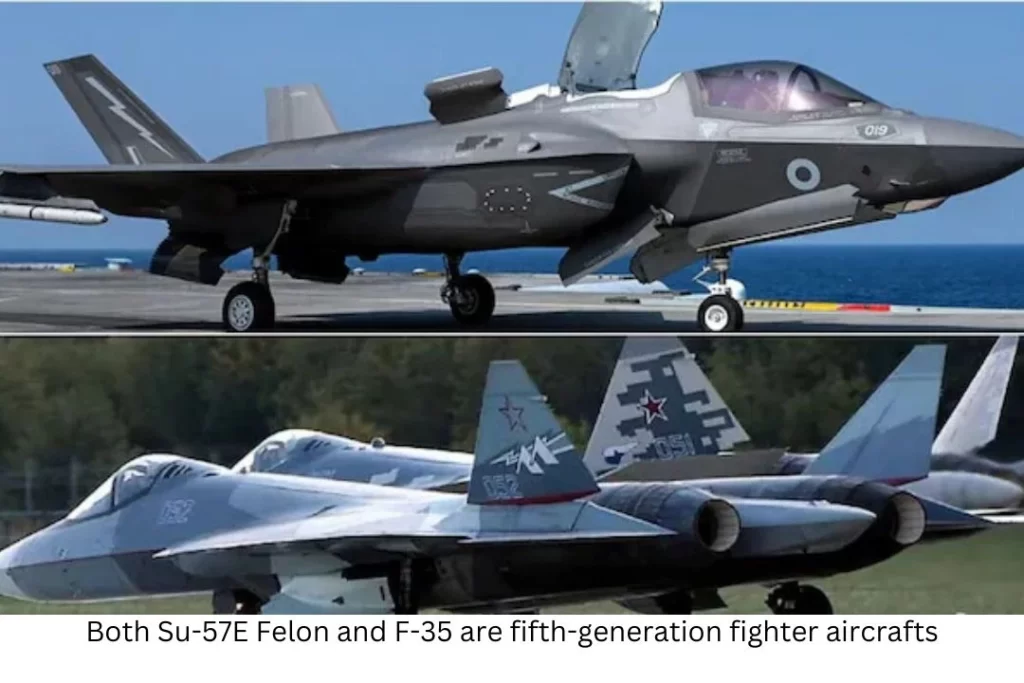In a move aimed at bolstering strategic defence ties, the United States has proposed the sale of its cutting-edge F-35 Lightning II stealth fighter jets to India. This offer was extended during a high-profile meeting between US President Donald Trump and Indian Prime Minister Narendra Modi at the White House. The move comes as part of ongoing efforts to strengthen Indo-US defence cooperation and enhance India’s aerial capabilities amid rising security challenges in the region.
However, the US is not the only contender in India’s quest for advanced fighter jets. Russian defence firm Rosoboronexport has also offered its fifth-generation Su-57E stealth fighter, positioning it as a viable alternative to the F-35. India, which is currently working on its indigenous fifth-generation fighter jet program, the Advanced Medium Combat Aircraft (AMCA), is evaluating these options to bridge the gap until AMCA is operational.
F-35 Lightning II: A Technological Marvel
Developed by Lockheed Martin, the F-35 is a state-of-the-art single-engine, single-seat stealth multirole fighter designed for air superiority, ground strikes, and intelligence gathering. The aircraft comes in three variants:
- F-35A: Conventional take-off and landing (CTOL) variant for the US Air Force.
- F-35B: Short take-off and vertical landing (STOVL) variant for the US Marine Corps.
- F-35C: Carrier-based variant for the US Navy.
Key specifications of the F-35 include a top speed of Mach 1.6 (approximately 1,931 km/h) and a combat range of about 1,500 kilometers. Its advanced stealth capabilities make it extremely difficult to detect on enemy radar. The aircraft also boasts sophisticated avionics and sensor systems, allowing for superior situational awareness and combat effectiveness. The F-35 is widely regarded for its interoperability with NATO allies and seamless integration with Western military systems.
Sukhoi Su-57E: Russia’s Answer to the Fifth-Generation Fighter Race
Designed by Russia’s Sukhoi, the Su-57E is a twin-engine, fifth-generation stealth multirole fighter built for air superiority and strike missions. It features advanced avionics, exceptional manoeuvrability, and stealth technology.
Key specifications of the Su-57E include a top speed of Mach 2 (approximately 2,136 km/h) and a combat range of about 1,900 kilometres. Unlike the F-35, which prioritizes stealth and electronic warfare, the Su-57 focuses on agility, speed, and firepower. It has both internal weapons bays and external hardpoints for a diverse range of amunitions, giving it an edge in dogfights and offensive operations.
Cost Considerations and Operational Challenges
One of the biggest factors in India’s decision-making process is the cost of acquiring and maintaining these advanced fighters. The F-35 is among the most expensive fighter jets in history, with a unit cost ranging between $80 million and $110 million, depending on the variant. Additionally, its lifetime operational cost, including maintenance, spare parts, and upgrades, is estimated to exceed $1.5 trillion over the program’s lifespan.
In contrast, the Su-57E is significantly more affordable, with an estimated unit cost of $35 million to $40 million. However, while the Su-57E offers a lower initial investment, the F-35 benefits from a robust global supply chain, more advanced avionics, and NATO compatibility, which could prove advantageous for India’s evolving defence strategy.
Operational Liberty and Transfer of Technology
On the other hand, Russia has historically offered India greater flexibility in defence deals, with fewer restrictions on operational deployment. The Su-57E, if chosen, would allow India to conduct missions without seeking prior approval from Moscow. Moreover, Russia is more open to technology transfer agreements, which could benefit India’s indigenous fighter jet programs. Integrating Russian technology into India’s AMCA project could accelerate its development and bolster domestic capabilities.
Strategic and Political Considerations
India has long-standing defence ties with Russia, with a significant portion of its military arsenal comprising Russian-origin equipment, including the Su-30MKI fighter jets. Integrating the Su-57E into India’s fleet would ensure continuity in defence cooperation with Russia. Additionally, Russian defence deals typically come with fewer restrictions, unlike American contracts, which often include stringent conditions and operational oversight.
On the other hand, acquiring the F-35 would mark a significant shift in India’s defence procurement strategy, aligning it more closely with Western technology and military infrastructure. The advanced stealth capabilities of the F-35 could enhance India’s operational edge in the Indo-Pacific region, a crucial factor given China’s growing aerial capabilities.
Balancing Indigenous Development with Foreign Acquisitions
India’s indigenous AMCA program is expected to deliver its first operational fighter jet by the mid-2030s. Procuring foreign stealth fighters could either complement or divert resources from the AMCA project. A critical factor in India’s decision will be balancing its short-term operational needs with long-term self-reliance in defence manufacturing.
At Aero India 2025, where both F-35 and Su-57E were showcased, a Russian official emphasized that India would face no restrictions or potential sanctions if it opted for the Su-57E. He also pointed out that India has faced delays in acquiring American F404 engines for its LCA Tejas Mk1A program, suggesting that US export policies could impact the timely delivery of crucial defence equipment.
While India continues to evaluate both options, its final decision will hinge on multiple factors, including cost, strategic partnerships, operational requirements, and indigenous defence ambitions. Whether India chooses the F-35, the Su-57E, or prioritizes its AMCA project, the decision will shape its air power capabilities for decades to come.






